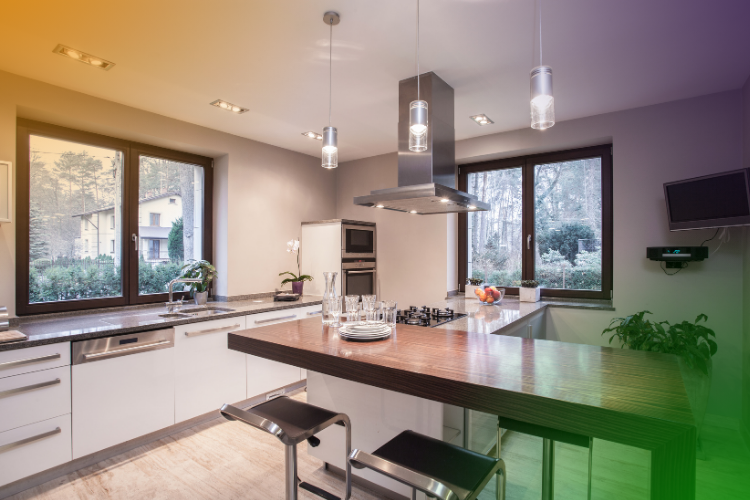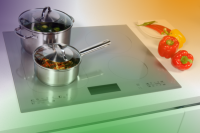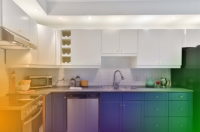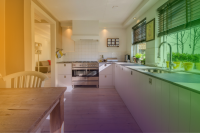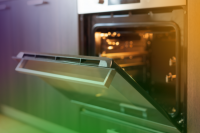Lighting in the Kitchen - Pendants or Not?
The main issue with kitchen lighting design in the UK is that it’s so often left as an afterthought. We spend hours debating various kitchen layouts, deciding on the colour of the kitchen cabinets and deliberating between granite or wooden work surfaces. Then right at the end of the process, just after you’ve chosen your taps, the designer will spend two minutes asking you about the sort of lighting you’d prefer.
21st century kitchens are no longer a space purely for just cooking. Our kitchens are a social space, a work from home space, or a space for kids to hang out after school and do their homework. Designing a lighting scheme which meets all of these needs isn’t always easy.
Clever lighting can also trick the eye into making a small kitchen feel lighter and airy, help disguise features you’d rather not draw attention to, and compensate for a lack of natural light in a north facing room.
Kitchen Lighting
Food preparation can be highly aided by having the right lighting for your kitchen. Finding the right balance between atmosphere – somewhere you can live, and practicality – somewhere you can prepare food can be difficult, but knowing what you are looking for can make it seem like a walk in the park – or kitchen!
Planning Your Lighting Scheme
Keep lighting in the forefront of your mind when you are planning your new kitchen, keeping in mind where the current sources of natural light are, and thinking about how the light moves around the room at different times of the day. If you leave thinking about lighting until your kitchen has been installed, you may find that your choices are restricted, and you may have to go back and start the planning again from scratch.
Think about your new kitchen design in terms of what will happen in each space. In the areas where you’re going to be chopping or cooking, you will need brightly focused task lighting. These bright task lights however are far less appropriate for a dining area, where you are going to be relaxing with friends. When looking at specific lights or bulbs, consider those which work on a dimmer switch, allowing you to adjust the brightness of a light. This idea works well in a smaller kitchen where areas have to perform a dual purpose – perhaps you will be using the kitchen table for working at home during the day and need a bright light, but would prefer to be able to dine with friends with a dimmer lighting.
If money is no object, then why not splash out on a whole-home or kitchen smart lighting scheme, controlled with a smartphone or app on your tablet. Configure all the lights in the room to your perfect pattern, store the settings and recreate it at the touch of a button.
Pendant Lighting or not?
Pendants can be a real statement piece, which will be one of the first things that visitors notice when they walk into the room. Check out your local salvage yards for something a bit different, especially if you’re a fan of the industrial feel in the kitchen. Pendant lights hung at a low level over the dining table can make the room feel intimate, but can equally be positioned higher up over a kitchen island. Dimmer switches work with most pendant lights, which makes your lighting even more flexible.
What Are the Different Types of Kitchen Lighting?
If you don’t know your task lighting from your dimmers don’t panic – here’s a quick guide to the main types of lighting you might want to consider for your kitchen. There are three types of lighting that can be modelled into a kitchen: Task lighting, ambient lighting and accent lighting. Efficiency will emerge in the kitchen, if you manage to find a balance between the three. If you need any advice, contact a tradesperson.
Accent Lighting
- If you have any decor in your kitchen to show off, this lighting is essential
- Lighting above cabinets in large kitchens can give your room a warm, open, classy feel
- Energy efficient bulbs are a must, as accent lighting can be a nice touch, but is essentially just for show
Task Lighting
Task lighting is bright, strong light which is aimed at the areas of the kitchen where you perform specific tasks. Examples of task lighting would be small LED bulbs under cabinets to light up worktops, lights on the cooker hood, or pendant lights over an island worktop. Modern LED lighting has revolutionised the choice, with bulbs being smaller and more efficient than ever. Some tips for choosing task lighting in your kitchen:
- Choose all of the areas in your kitchen that are ‘work areas’
- Choose the right bulb
- Halogen, for a light, soft glow
- Fluorescent, for energy efficiency
- Think about the type of light – Under cabinet, pendant and recessed ceiling lights are all populat choices
Ambient Lighting
Also known as 'Mood lighting'
Mood lighting is the flexible aspect of the lighting in your kitchen, and the starting point for creating a mood lighting scheme is to look at how much natural light you have coming in. Mood lighting is all about flexibility and adjusting the lighting levels depending on what is going on in the kitchen, so you are going to want to thinking about things like dimmer switches, table and standing lamps which can be moved around, or pendant lights on a plinth above the table which can be raised and lowered.
- Find a central place in your kitchen, to install a main light fixture
- Find the right style – Iron, Plastic and Glass are among the popular choices
- Find a balance between style, practicality and cost
- Consider using a dimmer switch
Feature and accent lighting is about guiding your eye to specific points in the room, or conversely, away from areas of the room you wish to hide. This could mean placing lights on shelving, or in a recess to draw attention to a prized piece of artwork. A popular trick is to run a row of lights along the base of kitchen cabinets, or to use colour changing bulbs in lights so you can change the ambience in the room depending on the time of day.
There’s no substitute for natural light, so try everything you can to get some daylight into your room. Depending on the construction of your kitchen, look at the possibility of adding Velux skylights in the roof, or enlarging an existing window. If lack of natural light is an issue, avoid anything which blocks light coming into the room such as heavy curtains or blinds or locating furniture in front of glass doors or windows. The same goes for outside; branches and plants growing against doors and windows should be trimmed back regularly to make sure there’s nothing stopping the maximum daylight getting into your home.
You should have an idea about choosing the right kitchen lighting, now. For advice on materials, placement, cost, or anything else, it is worth talking to a qualified electrician.
Fitting Kitchen Lights
Buying kitchen lighting off the shelf or online gives you a huge range of possibilities, but when it comes to installing the lights, it’s always best to get a fully qualified electrician in to fit the lights for you. If you are changing the lighting as part of a larger kitchen makeover, then ask whether the company who is installing the kitchen have a lighting specialist. Many of the larger companies do, and will offer their expertise free of charge.
Looking For Local Electricians For Kitchen Lighting?
If you are looking for local electricians to fit lighting in your dream kitchen you could find them using Top Tradespeople: Here are some popular locations to find the right kitchen lighting electricians quotes. Alternately we can also help you to find local kitchen fitters too.
